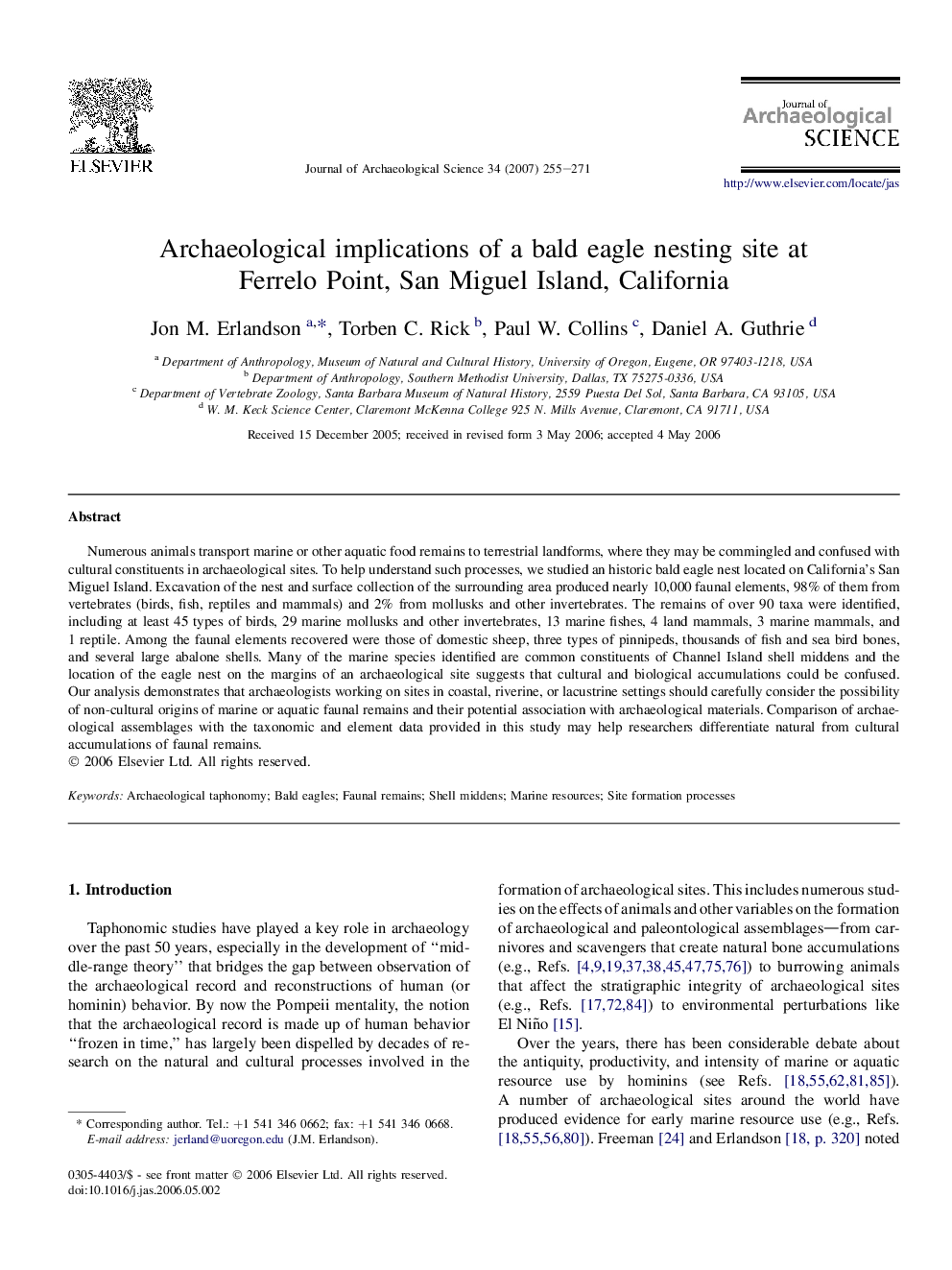| Article ID | Journal | Published Year | Pages | File Type |
|---|---|---|---|---|
| 1037697 | Journal of Archaeological Science | 2007 | 17 Pages |
Abstract
Numerous animals transport marine or other aquatic food remains to terrestrial landforms, where they may be commingled and confused with cultural constituents in archaeological sites. To help understand such processes, we studied an historic bald eagle nest located on California's San Miguel Island. Excavation of the nest and surface collection of the surrounding area produced nearly 10,000 faunal elements, 98% of them from vertebrates (birds, fish, reptiles and mammals) and 2% from mollusks and other invertebrates. The remains of over 90 taxa were identified, including at least 45 types of birds, 29 marine mollusks and other invertebrates, 13 marine fishes, 4 land mammals, 3 marine mammals, and 1 reptile. Among the faunal elements recovered were those of domestic sheep, three types of pinnipeds, thousands of fish and sea bird bones, and several large abalone shells. Many of the marine species identified are common constituents of Channel Island shell middens and the location of the eagle nest on the margins of an archaeological site suggests that cultural and biological accumulations could be confused. Our analysis demonstrates that archaeologists working on sites in coastal, riverine, or lacustrine settings should carefully consider the possibility of non-cultural origins of marine or aquatic faunal remains and their potential association with archaeological materials. Comparison of archaeological assemblages with the taxonomic and element data provided in this study may help researchers differentiate natural from cultural accumulations of faunal remains.
Related Topics
Physical Sciences and Engineering
Materials Science
Materials Science (General)
Authors
Jon M. Erlandson, Torben C. Rick, Paul W. Collins, Daniel A. Guthrie,
